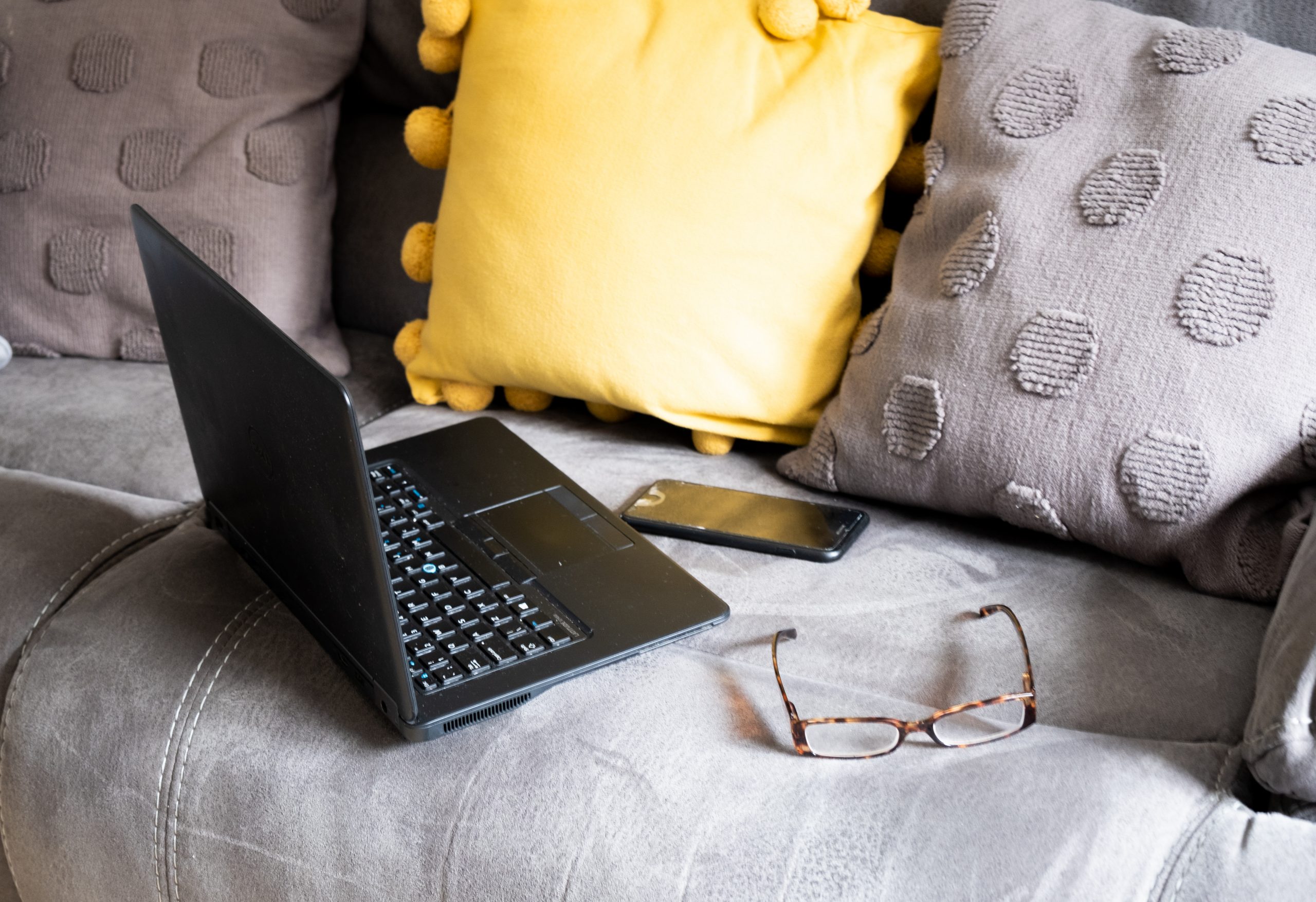It was around three weeks into the first lockdown that people started to get concerned about the niggles they were starting to experience. Initially able to ignore or manage them, people carried on working assuming that lockdown would not be for that long after which they’d return to the office as normal, and all would be well. And so, they put off seeking any help. The trouble is, more often than not, any pain is a warning sign of something going wrong and ignoring it only means it will develop.
Before the end of that first lockdown, the effect of sitting on the sofa or bed, huddled over a laptop started to be felt. As nice as working in bed may sound, our bodies are not designed for it. Hunching over a small laptop, staring at a small screen, and having no arm support and a keyboard at the wrong height for typing doesn’t do anyone any good.
Couple this with the fact that a recent survey has shown that 46% of people admitted to being less active than normal. Whether a commute is walked or driven, the fact is in the office we’re more likely to get up to make a drink, go to see someone for a meeting or a chat or have some other reason to move, that we don’t have at home.
At the end of April 2020, the Institute of Employment Studies carried out research for home workers during the first lockdown to track employee wellbeing patterns. They found that of all those surveyed 58% complained of newly developed neck pain and 55% of back pain.
More recent surveys have shown other key factors affecting healthy working have also deteriorated. According to the Royal Society for Public Health there was a 30% increase in disturbed sleep and 67% of people felt less connected to colleagues.

The trouble is it’s often accumulative and the aches and pains of today can reflect the bad practices of the past. Not that it’s ever too late to act. Sometimes the smallest of changes can make the biggest difference.
So, what should you do? Well, there are two main actions that you need to take: firstly get off that sofa and go and sit at the dining room table, raise your laptop onto a laptop stand, or better still purchase a monitor, get hold of a separate keyboard and mouse and a proper office chair, and you will be sitting in a much better position. If that doesn’t sound feasible, since the start of lockdown there have been a number of solutions that have popped up on the market in recognition of the space issue people have struggled with and you could consider some of these.
Secondly, get up and get moving. The usual recommendation is that you change position every 20 minutes, for 20 seconds, during which time you take your eyes off your screen to give them a break. If that doesn’t sound possible, get creative – can you get up and walk when you’re on the phone? Could you move your laptop to a kitchen worktop for a few minutes rather than sitting still? There are usually ways around this.
Whether you decide to go all out with your desk set up or to just make minimal changes, given that home working seems to be here to stay, it’s time to invest in yourself and that way you’ll be able to enjoy many more comfortable years working at your desk.
